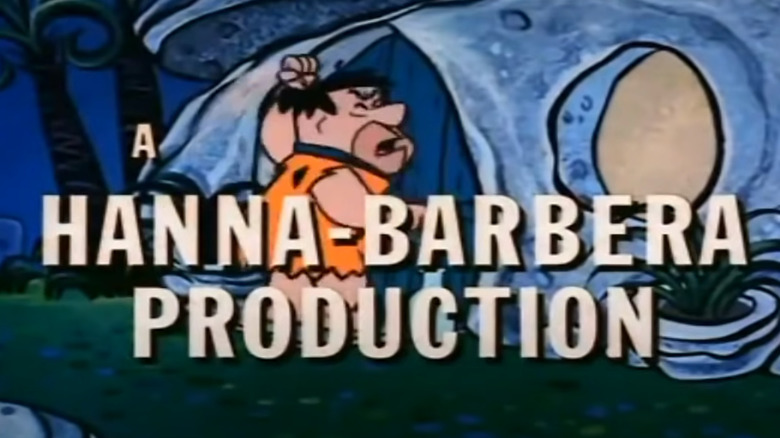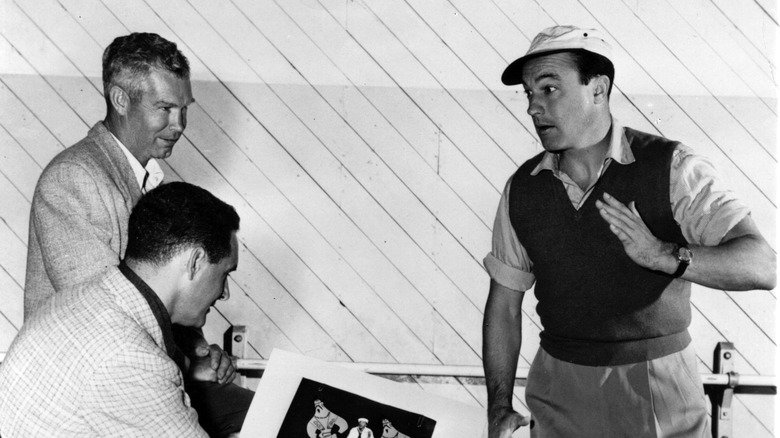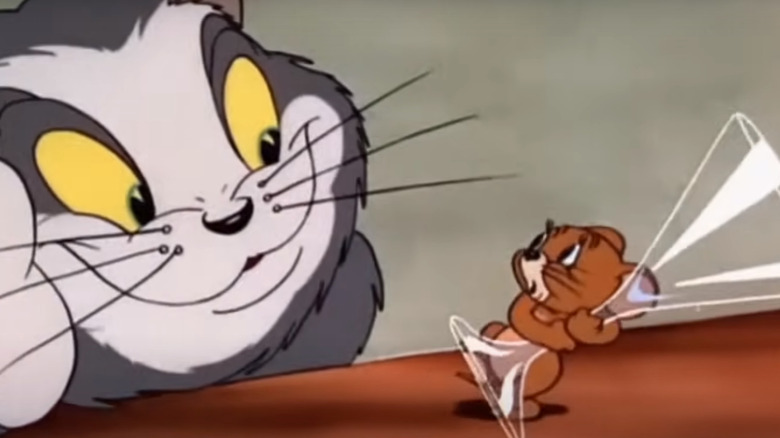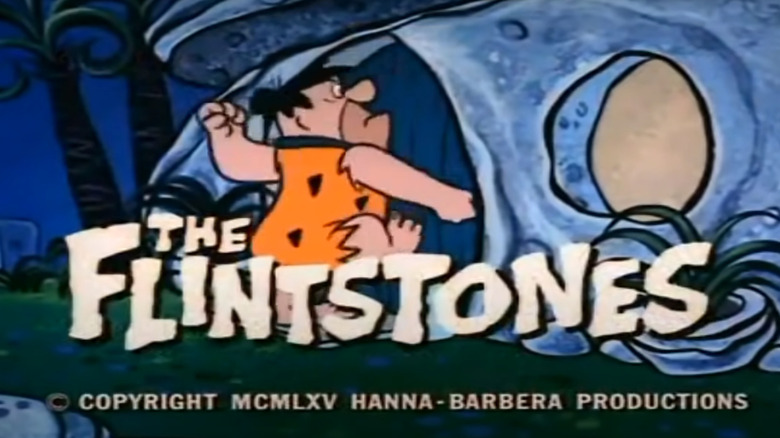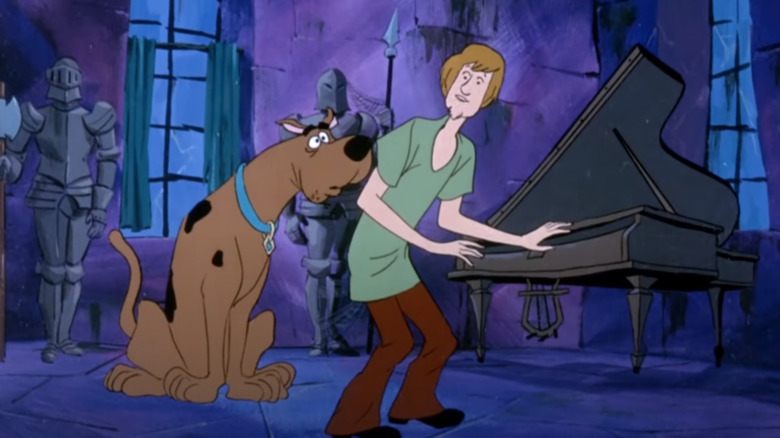William Hanna And Joseph Barbera's Partnership Explained
They haven't really been a thing for decades now (per Collider), but there was a time when Saturday-morning cartoons were the bread-and-butter of American children of a certain couple of generations (we're looking squarely at you, Gen-X). Any parent who raised a child during those years will tell you that those kids were often out of bed and staring at the TV long before the networks even came on the air (yes, in those days, per CNN Business, the networks didn't broadcast 24/7).
The 1980s may have been a golden age of Saturday-morning cartoons — "He-Man," "The Care Bears," and "Rainbow Brite," among countless others, were and are classic 1980s toys with a matching two-dimensional presence on the airwaves. But just as often, local TV stations reached even further back for their programming, back to the 1960s, when shows like "The Jetsons," "Scooby-Doo," and "The Flintstones" ruled the day. And two men are responsible for those three shows and countless other cartoons: William Hanna and Joe Barbera, who worked professionally under the name "Hanna-Barbera" (per Norman Rockwell Museum).
Cartoons go from the movies to TV
The history of animation as it relates to motion pictures goes back to 1906, according to Britannica. For decades, animated shorts were shown at movie theaters along with live-action feature films, according to Cartoon Research. Many of the "classic" cartoons and their characters we enjoy today — Speedy Gonzalez, Bugs Bunny, Woody Woodpecker, and countless others — got their start on the silver screen. The idea of a feature-length animated movie didn't come along until 1937 with Walt Disney's "Snow White and the Seven Dwarfs," according to Master Class.
TV began to take hold in the 1940s and 1950s, and during this period, two things happened. The first is that broadcasters started showing old theatrical cartoons on the new format; as Just Watch reports, "The Bugs Bunny Show" consisted of Bugs hosting the show and introducing the audience to his theatrical bits. The second is that broadcasters hit upon the idea of producing cartoons specifically for the small screen. Hanna, Barbera, and their company would have a role in both of these phases in the history of cartoons on TV.
William Hanna and Joseph Barbera
William Hanna was born in what is now New Mexico in 1910 (per The New York Times). After trying and failing at a few jobs, by 1930 he'd found employment in an animation studio, although his first job was more of that of a gofer than an animator. By 1934 he was on the payroll of MGM, making cartoons. It was there that he met and worked with Joseph Barbera, born in 1911, according to The Guardian. Like Hanna, Barbera tried out a handful of jobs here and there before eventually making his way to MGM as an animator.
Each man brought his own skill set to the table. Barbera was the man with the wit: In addition to his steady employment, he also made money here and there selling jokes. Hanna, for his part, brought the storytelling: Hanna was known to have gifts for timing and story construction. Some time in or before 1940, according to Britannica, the two men teamed up to try making their own cartoon.
'Tom and Jerry' changes everything
At some point while Hanna and Barbera were working together at MGM, one of them hit upon an idea, according to the Norman Rockwell Museum: "Why don't we do a cartoon of our own?" Barbera asked Hanna. Cats have been chasing mice since before humans were watching them do it, and there's comedy gold in that, said Barbera: "The minute you see a cat and mouse on the screen, you know it's comedy." He drew a sketch and Hanna worked out how to time it for believable animation. "Puss Gets the Boot" (above) was the result. It features a cat that at the time was named "Jasper" and a mouse which, according to the Normal Rockwell Museum, was named "Jinx" (they wouldn't become "Tom" and "Jerry" until 1941's "The Midnight Snack," according to Illustration History).
"Puss Gets the Boot" would go on to win an Academy Award for Best Animated Short, as would later "Tom and Jerry" cartoons. Further still, film distributors were asking for more of "those delightful cat and mouse cartoons." "Tom and Jerry" was a hit, and so were Hanna and Barbera.
'The Flintstones' changes everything again
Hanna and Barbera experienced explosive success with the "Tom and Jerry" franchise, but that was in the early 1940s, when cartoon shorts before movies were still a thing and people frequently went to movie theaters for entertainment. By the 1960s, however, cartoon shorts were in decline in movie theaters (though they continued until the 1970s, according to Cartoon Research), and television was becoming ubiquitous. Studios were closing down their animation studios, and Hanna and Barbera weren't spared.
In 1960, according to Illustration History, the men hit upon the idea of an adult-oriented animated series to air on TV as a sitcom in 30-minute chunks. The guys had looked toward various points in world history for inspiration – pilgrims, Romans, and so on — before arriving on the modern stone-age family that is "The Flintstones." After shopping it around to every network, ABC took a chance on the concept. It was a success, so much so that another Hanna-Barbera animated prime time sitcom, "The Jetsons," followed it two years later.
The Hanna-Barbera legacy
"The Jetsons," "The Flintstones," and "Tom and Jerry" are just some of the more recognizable high points in Hanna-Barbera history, and they're also some of the properties that played a role in the company's development. They are just a few of the studio's hundreds of productions (Cleveland.com published a partial list in 2017), including the "Scooby-Doo" franchise (above), "The Powerpuff Girls," "Huckleberry Hound," and "Yogi Bear," among multiple others.
The reason you're watching half-hour animated sitcoms at all can be traced to Hanna and Barbera; though the animated sitcom concept mostly died out after "The Flintstones" and "The Jetsons," Hanna and Barbera paved the way, at least conceptually, for the likes of "Bob's Burgers" and "Family Guy" to become big when the concept was revived again decades later.
Warner Bros. bought the studio in 1996 (per Britannica). William Hanna passed away in 2001 at the age of 90, according to The New York Times. He published his memoirs, "A Cast of Friends," in 1996. Joe Barbera died in 2006 at the age of 95, according to The Guardian. His memoir, "My Life in 'toons: From Flatbush to Bedrock in Under a Century," was published in 1994.
